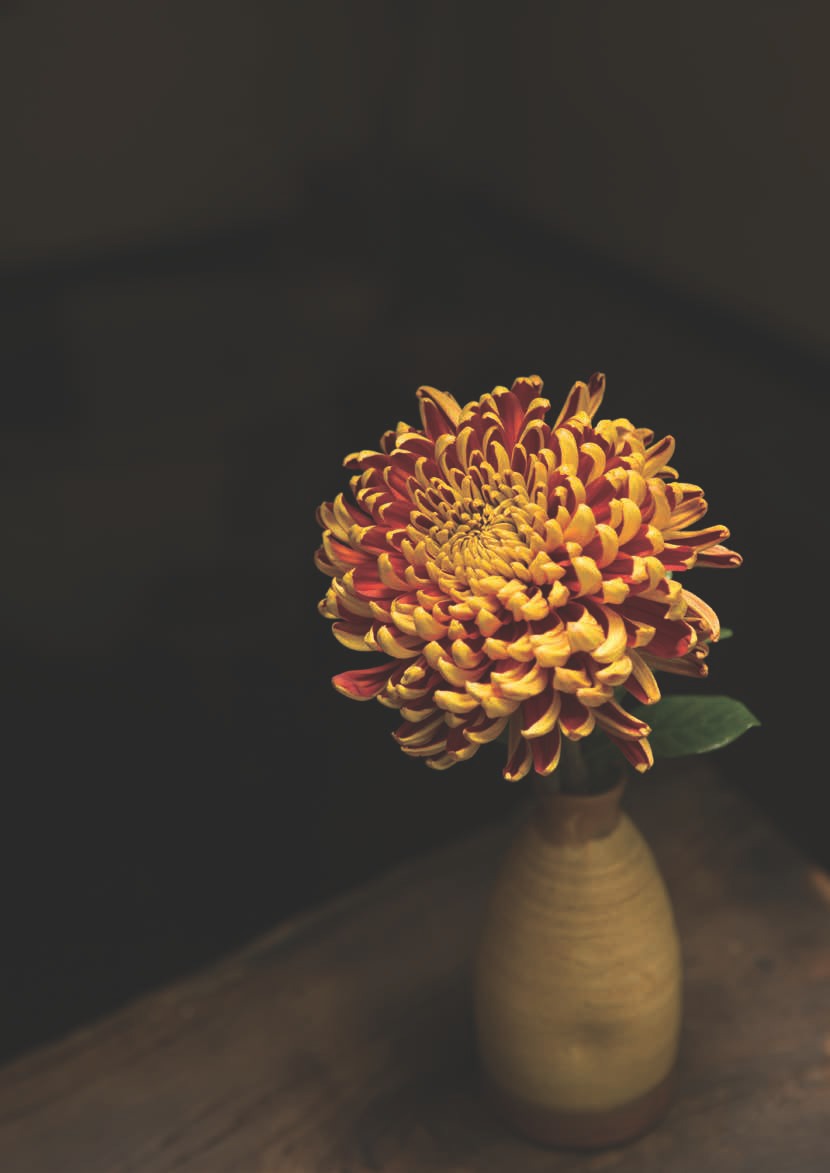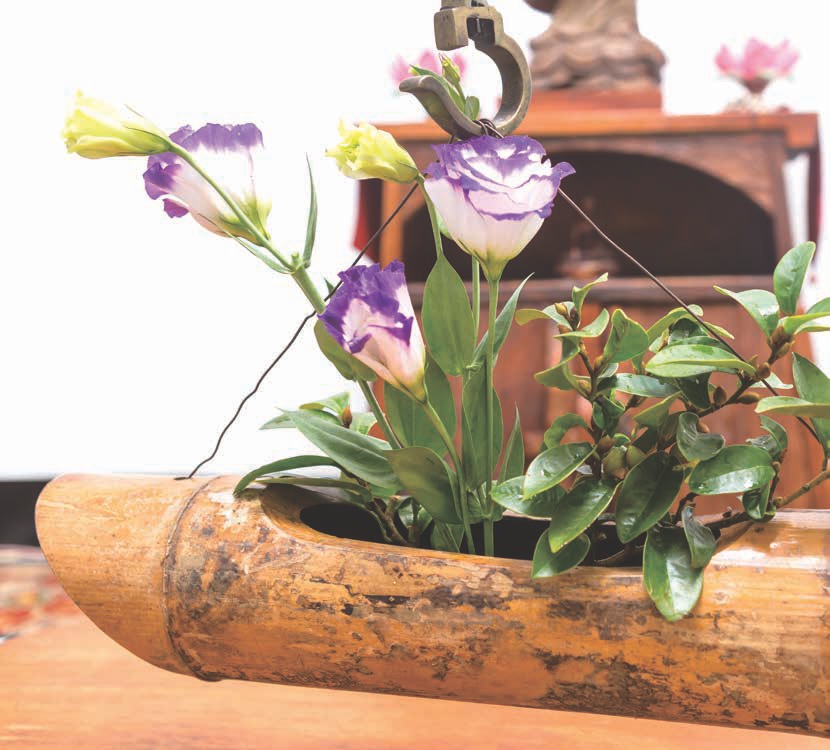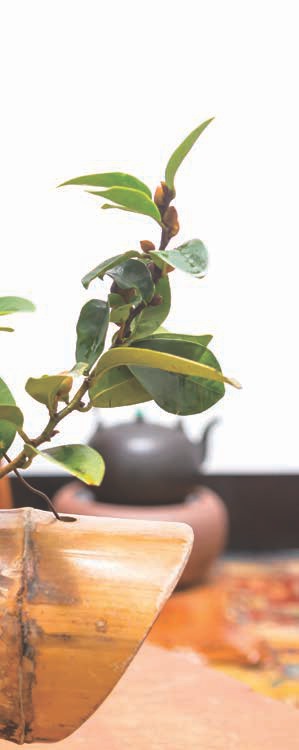
 |
|
Flowers are said to be the enlightenment of the plant kingdom. Since ancient times, they have been offerings on countless altars, for what better gift could one present to the Divine than the enlightened aspects of this world, symbols of the very pinnacle of Nature's glory? The Buddha also recognized the power of a single flower. It is said that upon Vulture Peak, the Buddha stood before a large congregation of monks, nuns, and laity. Perhaps in stark contrast to the expectations of the assembly, the Buddha remained silent, and instead held forth a flower. The respectable Mahakasyapa smiled unto this and became the first patriarch of the Zen tradition. Though Zen has developed and changed over the course of time, flowers still play an integral role in the life of any Zen practitioner.
Flowers were beautiful long before any humans held them in their hands. But beauty that knows it's beautiful is more powerful than beauty alone! That is what human consciousness contributes to the equation. We cannot perceive of beauty unless it is inherent within us, and so to look upon this world through that lens of awareness is to bring great joy to the world itself, as the beauty in us now sees its reflection in Nature! And that was a small part of the deep understanding the Buddha saw in Mahakasyapa's smile. In that moment, Mahakasyapa was flowering, and the flower was smiling.
When we realize the deeper meaning of our actions, we are less likely to sacrifice their essence to a surface level convenience. For example, while it is nice to arrange flowers to make a space more beautiful, one might use fake flowers to the same effect. This would be more convenient. But if I think of each of my flower arrangements as an offering, like the Buddha made during his sermon, then flower arranging is not just about beautifying a space anymore, but about creating the opportunity for someone to awaken, or at least rest in the stillness that flowers so miraculously grant us. My orientation towards flower arranging means everything; it's the difference between a chore and a Zen practice. If what we do is connected to something greater than ourselves, it becomes something greater than just a task; it becomes art, or even something sacred - it becomes Zen.
When arranging your own Zen flowers, remember the impetus they played in the very flowering of human consciousness, and let that motivate you to make each arrangement your best one ever, for it might just cause someone to smile in Mahakasyapa enlightenment! And in such a practice, the flowers are fulfilled. The sacrifice made by them, in growing and dying for us, is meaningful. Their lives are properly celebrated by such a sacred act, and we are then worthy of having them in our space.
And so, like anything, we get back what we put into it. We get awe-inspiring flower arrangements when we show up with an awareness and appreciation of that flower the Buddha held high in the air. This awareness inspires us to make flower arrangements with the same power, as if every blossom we ever use were that mythical one. And in an absolute sense, they are!
There is no particular style to Zen flower arranging. It is not a method or a pragmatic approach to arranging the flowers themselves. It is a celebration and a welcoming of our true selves, our guests and Nature. The space in which the flowers are arranged and the quality of the mind arranging them are the primary considerations. In our center there are different spaces and occasions that call for different flower arrangements. Some are very elegant and intricately arranged, while others are more rustic or even simply scattered about. Certain arrangements represent abundance and others are made to express humility. Most important, however, is that we follow the stem into the water of Truth all flowers drink from...

When you ask of the dark, The master shows you the light. When you ask of the light, She shows you the dark. Forgetting shadows and suns, The world rolls away - Blossoms bloom, blossoms fall.
At our center, we arrange and offer fresh flowers in different spaces. In our main tea hall and meditation room, you will always find orchids on display. They symbolize abundance, and this is certainly an abundant center - thanks to you! We are so grateful for your support and we celebrate that with offerings of Nature's enlightenment. On the tea table itself, we often arrange simple flowers or sometimes scatter wild ones to suit the theme of the chaxi. In the window peering into our gongfu room, we often display a variety of flower arrangements, ranging from elegant and floral, to austere and even flowerless. You will also notice homey arrangements offered in and around the kitchen. And, of course, we adorn many of our altars with beautiful, abundant and fresh flowers. We keep these flowers changed throughout the week as needed to welcome our guests, beautify our Tea and Zen center, create opportunities for stillness, and pay homage to the roots of this tradition, in the flower that began it all.

The living and dying of flowers before our very eyes is a beautiful reminder of the fleeting impermanence of all things, including this very life. In them, we find our own mortality, and an ability to celebrate the present moment. Flowers are fully awake, from the moment they open to the moment they die and become something else. In Zen, we do not throw our used flowers away. We bury them, burn them, place them in a stream or dispose of them in some other ceremonious fashion - thankful for all they have taught us on their way to becoming soil, and flower again...

Let these flowers remind you of your own potential for awakening. View them carefully and pay attention to not only the flowers and fillers but the spaces in between. There must be space to honor each flower, just as we must create space in our lives to make room for growth and welcome change. Notice how you feel when fresh flower arrangements surround you in your environment. Make a practice of both arranging Zen flowers and of viewing them. Look towards Nature for inspiration. A Zen flower arrangement might be found in the most unlikely spot if you are open to seeing it.
Your ability to arrange Zen flowers need not depend on books, videos or guidelines. Like a good tea session, in which the most important element is the one serving the tea, the most important aspect of a flower arrangement is the arranger. Average tea served with heart will always be better than the best tea served without any intention at all. While great teaware and skill are ideal in conjunction with great intention, the latter is primary. So too, a variety of vases and abundant flower sources are great, but keep things simple in the beginning. Let your intentions motivate you to start arranging and viewing your own Zen flowers.

Zen, after all, is a state of mind, and so the Zen flower is akin to an open state of mind, one that is empty and receptive, like a good tea bowl. If a flower arrangement reminds you of that truth, it has done its job well! Beyond that, flowers point to the still space, into which no words may follow...

